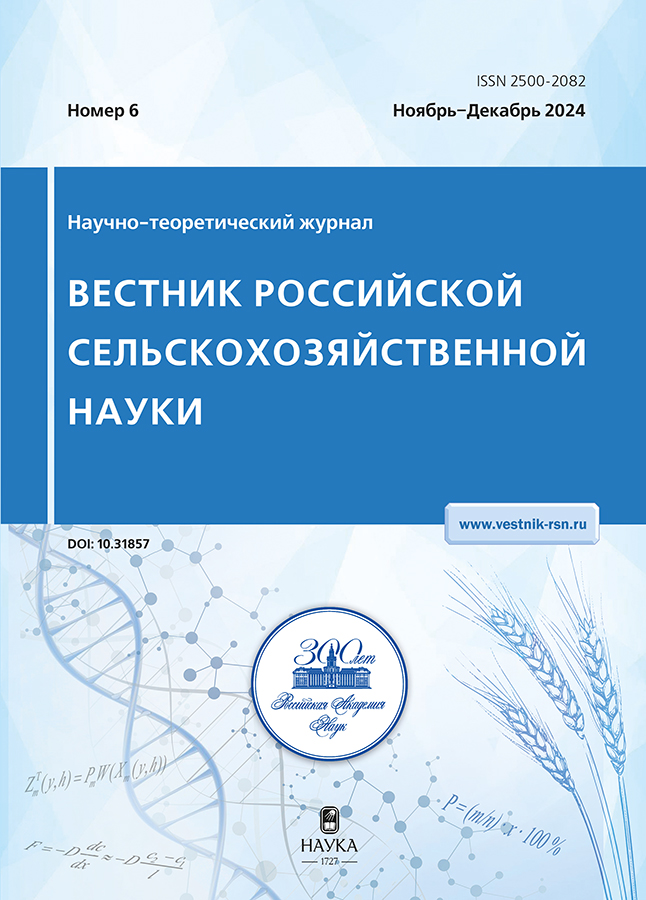Postagrogenic Transformation and Assessment of Carbon Stocks of Karelia Unused Forage Lands' Phytocenosis
- Авторлар: Bakhmet O.N.1, Evstratova L.P.1, Nikolaeva E.V.1, Dubina-Chekhovich E.V.1
-
Мекемелер:
- Karelian Scientific Center of the RAS
- Шығарылым: № 6 (2024)
- Беттер: 17-20
- Бөлім: Crop Production and Selection
- URL: https://archivog.com/2500-2082/article/view/659217
- DOI: https://doi.org/10.31857/S2500208224060044
- EDN: https://elibrary.ru/WUZDVW
- ID: 659217
Дәйексөз келтіру
Аннотация
On forage lands overgrown with vegetation of low value for agricultural production, the postagrogenic transformation of the grass cover manifested itself in a decrease in the total projective coverage up to 1.7 times (compared with hayfields 94.8–99.0%) and heterogeneity of the species composition. The coefficients of floral similarity of haymaking Jacquard and forage lands with the curtin type of overgrowth averaged 0.45, and with the solid type – 0.39. Grass-cereal or cereal-grass stands were mainly composed of rhizomatous and turf-bearing plant species. The reserves of absolutely dry aboveground mass (4.86 t/ha) and carbon (2.04 t C/ha) of hayfields significantly exceeded (up to 1.5 times) the corresponding indicators of unused forage lands.
Негізгі сөздер
Толық мәтін
Авторлар туралы
O. Bakhmet
Karelian Scientific Center of the RAS
Email: levstratova@yandex.ru
Corresponding Member of the RAS
Ресей, PetrozavodskL. Evstratova
Karelian Scientific Center of the RAS
Хат алмасуға жауапты Автор.
Email: levstratova@yandex.ru
Grand PhD in Agricultural Sciences, Professor
Ресей, PetrozavodskE. Nikolaeva
Karelian Scientific Center of the RAS
Email: levstratova@yandex.ru
PhD in Agricultural Sciences
Ресей, PetrozavodskE. Dubina-Chekhovich
Karelian Scientific Center of the RAS
Email: levstratova@yandex.ru
PhD in Biological Sciences
Ресей, PetrozavodskӘдебиет тізімі
- Bakhmet O.N., Evstratova L.P., Nikolaeva E.V. i dr. Ocenka rastitel’nogo pokrova pri analize byudzheta ugleroda v agrolandshaftah Karelii // Vestnik rossijskoj sel’skohozyajstvennoj nauki. 2023. № 6. S. 55–60.
- Vakhrusheva V.V., Pryadil’shchikova E.N., Stolyarchuk E.I. Produktivnost’ i pitatel’naya cennost’ pastbishchnyh agrofitocenozov na osnove zlakovyh i bobovyh trav // Molochnohozyajstvennyj vestnik. 2021. № 2 (42). S. 31–40.
- Dospekhov B.A. Metodika polevogo opyta. M.: Agropromizdat, 1985. 351 s.
- Mishina Z.A., Surova T.S. K voprosu o prichinah snizheniya plodorodiya pochvy zemel’ sel’skohozyajstvennogo naznacheniya // Azimut nauchnyh issledovanij: ekonomika i upravlenie. 2020. T. 9. № 3 (32). S. 349–353.
- Megarran E. Ekologicheskoe raznoobrazie i ego izmerenie. M.: Mir, 1992. 184 s.
- Pristova T.A. Soderzhanie ugleroda v rasteniyah srednetaezhnyh listvennyh fitocenozov Respubliki Komi // Principy ekologii. 2022. № 3. S. 43–49. https://doi.org/ 10.15393/j1.art.2022.12402.
- Telesnina V.M. Dinamika svojstv pochv vo vzaimosvyazi s rastitel’nost’yu pri estestvennom postagrogennom zarastanii senokosov (Kostromskaya oblast’) // Vestnik Moskovskogo universiteta. Ser. 17. Pochvovedenie. 2021. № 2. S. 18–28.
- Ufimceva M.D. Indikatornaya rol’ rastitel’nosti pri ekologicheskih issledovaniyah [Elektronnyj resurs]. Rezhim dostupa: http://www.eco.nw.ru/lib/data/10/07/020710.htm (Data obrashcheniya 25.09.2024).
- Kalinina O., Goryachkin S.V., Lyuri D.I., Giani L. Postagrogenic development of vegetation, soils and carbon stocks under self-restoration in different climatic zones of European Russia // Catena. 2015. V. 129. P. 18–29.
Қосымша файлдар









